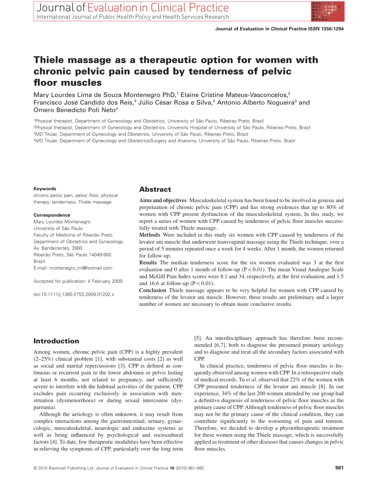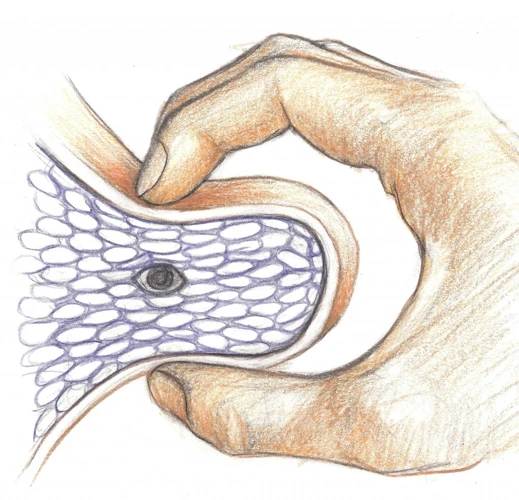Thiele massage is a type of massage therapy developed by Dr. Martha Thiele that utilizes a combination of soft tissue manipulation, energy healing, and specific breathing techniques to address a variety of physical and emotional issues. It is a gentle, holistic approach to massage, designed to bring balance, relaxation, and well-being to the body and mind. In this article, we will explore what Thiele massage is, the benefits associated with it, and how it can help you.
Contents
What is Thiele Massage?

Thiele Massage is a specialized form of massage therapy developed by the late German massage therapist, John Thiele. It is designed for deep relaxation and the release of muscle tension and stress. The technique is based on the principles of manual therapy, using gentle pressure and slow, rhythmic movements to stimulate the body’s natural healing response.
History of Thiele Massage
John Thiele developed this form of massage therapy in the 1920s, after studying anatomy and massage therapy in his native Germany. He found that by using the principles of touch, pressure, and rhythm, he could help reduce pain and improve relaxation. Thiele massage is often referred to as the “father” of modern massage therapy, and is still practiced in many countries around the world.
Benefits of Thiele Massage
Thiele Massage offers many benefits, including relaxation, improved circulation, and relief from pain and tension. This type of massage is especially beneficial for those suffering from chronic pain and stress. It can also help reduce inflammation and improve joint mobility. In addition, it can be used to reduce muscle spasms and improve posture. Lastly, it can help to reduce fatigue and improve overall wellbeing. Thiele massage can be used as part of a regular wellness program or as a stand-alone treatment for those seeking relief from pain, stress, and tension.
How to do Thiele Massage
Preparation
Start by having your client lie face down on the massage table. Do a brief intake to check for any contraindications to the massage, such as open wounds, fractures, or recent surgeries.
Procedure
Begin with effleurage, using long, sweeping strokes from the neck to the lower back. This helps to relax the muscles and increases circulation in preparation for the massage. Use the flat surface of your hand and fingers to massage the back muscles. Continue the massage using light pressure to target the deeper muscles. Use circular or kneading movements to apply pressure to the muscles and help them to relax. As you massage deeper, you can use your fingertips to apply extra pressure to any particularly tight knots or areas of tension.
Frequently Asked Questions
What are the Main Benefits of Thiele Massage?
Thiele Massage is an effective and holistic therapy that helps to improve the health of soft tissues and relax the body. It has many benefits, such as:
- Reduced Muscle Tension – Thiele Massage works to reduce muscle tension and stiffness by loosening tight muscles and releasing trigger points.
- Improved Circulation – The massage technique helps to increase blood flow, which can improve the delivery of oxygen and nutrients to the body’s tissues.
- Stress Relief – The massage can help to reduce stress and anxiety by calming the nervous system, which can lead to improved sleep.
- Improved Mobility – Thiele Massage can help to improve joint mobility, flexibility and range of motion, which can lead to improved physical performance.
What Conditions Can Thiele Massage Help Improve?
Thiele Massage is known to be beneficial for a variety of health conditions, including headaches, neck pain, chronic pain, stress, anxiety, insomnia, joint pain, and muscle tension. It can also help improve mobility and flexibility, improve posture, and boost energy levels. Additionally, Thiele Massage can help reduce inflammation, improve circulation, and support the immune system.
How often should I receive Thiele Massage treatments?
The frequency of Thiele Massage treatments depends on your individual needs and the condition you are trying to address. Generally speaking, it is recommended to receive treatments every two to four weeks for best results. However, some people may find that more frequent treatments are beneficial. If you feel that your condition has not improved, your massage therapist may recommend more frequent treatments. Your massage therapist can also provide advice on how often you should receive treatments.
What Should I Expect During a Thiele Massage Session?
- Assessment: During the initial consultation, the therapist will discuss the general health of the patient and the areas of concern. This helps the therapist to determine the best approach for the massage session.
- Customized Massage: Depending on the patient’s needs, the massage session may include a variety of techniques such as Swedish massage, deep tissue massage, reflexology, acupressure, and trigger point therapy.
- Focused Attention: During the massage session, the therapist will focus on problem areas and apply pressure in order to release tension and reduce pain.
- Relaxation: Throughout the massage, the therapist will work to create a relaxing atmosphere for the patient. This includes using calming music, aromatherapy, and a comfortable and quiet environment.
- Follow-Up: After the massage session, the therapist will discuss the results of the massage and provide guidance on how to maintain the benefits of the massage.
Is Thiele Massage Safe for Pregnant Women?
Thiele Massage is a safe and gentle therapy for pregnant women. It helps to reduce stress, provide relief from pregnancy muscle aches, and improve circulation. Additionally, it can help to reduce the chances of preterm labor and can promote a healthy birth weight. Thiele Massage can also help to reduce the symptoms of morning sickness and prepare the body for labor. As with any massage, it is important to discuss your needs with your health care provider before receiving a Thiele Massage.
Conclusion
Thiele massage is a type of massage therapy that can help reduce pain, tension, and stress. It can also help improve flexibility and balance, and reduce the risk of injury. It is a safe and effective treatment that can be used to treat a variety of conditions, including neck and shoulder pain, lower back pain, headaches, and other muscular tension. Thiele massage can be done alone or in combination with other massage techniques and therapies. Talk to your massage therapist about the benefits of Thiele massage and how it can help you achieve your health and wellness goals.

